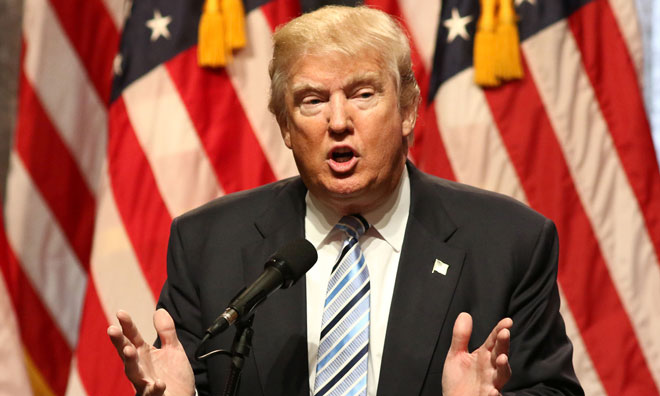How Trump’s victory will impact Life Sciences
Posted: 13 December 2016 | | No comments yet
Threats to immediately end Obamacare? Import cheaper drugs from overseas? Analysts Alex Pye and Mark Brewer look to the facts for Trump’s pharma impact…


In the weeks that follow the surprise victory of Donald Trump in the US election, it is still difficult to ascertain what impact his time in office is likely to have. While we have seen only limited market volatility in the near-term, there remains an undeniable feeling of uncertainty surrounding Trump’s impending presidency and many industries fear what course he may take when he enters the White House.


But for the Life Sciences industry, we do not expect Donald Trump’s victory to have a significant impact on the issues and challenges already existing within the sector. If anything, it could even be positive for the industry.
The immediate aftermath of the election saw pharmaceutical stocks surge, with an 8% and 16% uplift in the US Pharma & Biotech and NASDAQ Biotech indices. However, this stock rally does not seem set to continue, especially since Donald Trump’s recent claim in an interview with TIME magazine that he is going to bring down drug prices.
Pricing pressures will continue though, irrespective of who is now lined up for the presidential role. Sir Andrew Witty, the departing CEO of GlaxoSmithKline, highlighted that regardless of who won the election, the direction was already set for the pharma industry, which will be subject to more and more pricing controls.
So if the direction is set, what trends are we likely to see in the Life Sciences sector as Donald Trump enters the White House? And will his presidency change anything?
The issue of drug prices is unlikely to dissipate under a Donald Trump presidency
One of Donald Trump’s aims is to allow Americans to import lower priced drugs from other countries, but this is expected to be difficult to implement given the power of the pharmaceutical lobby group. Whilst Trump has stated his plans to control drug prices, it’s likely that the pharmaceutical lobby group will argue for the status quo to be sustained.
To support their argument, lobby groups are likely to argue that implementing further price controls will impact levels of R&D. The case that pharma companies have pushed for years is that lowering or imposing drug price controls will not only reduce their ability to invest in research but also lead to fewer new therapies. The industry typically spends around 15% of revenues on R&D whilst spending 25-35% on sales & marketing; arguably, the industry would have better served patients by re-allocating some of the S&M costs to R&D.
We would argue that such a shift in cost allocations can and should be achieved, particularly with the emergence of precision or personalised medicine in which therapies can be developed and targeted at patients who will actually benefit from the therapy (rather than providing a therapy to all but which works in perhaps only 30% of patients).
However, senior pharmaceuticals executives have warned that the issue of drug prices is unlikely to dissipate under a Donald Trump presidency.
7 December – Bloomberg’s Jared Hopkins discusses Donald Trump’s stance on drug prices and whether his election victory will prove to be bad medicine for the pharmaceutical industry. He speaks with David Gura on “Bloomberg Markets.” Source: Bloomberg Politics
Does Obamacare still have a future?
Trump has made it clear that he wants to repeal the Affordable Care Act (Obamacare), a national healthcare reform law which extended medical insurance to 25 million more people by expanding the Medicaid plan for the poor and creating subsidised coverage for individuals; in total, creating healthcare access to 40-45 million people.
However, he generally opposes interfering with the drug industry, opting instead to eliminate the individual mandate requiring people to buy insurance policy. He wants to replace this with tax deductible health insurance plans, Health Savings Accounts (HSAs) and to require greater price transparency from all healthcare providers so that individuals are able to shop around for the best prices for procedures, exams or any other medical related interventions. We consider this to be a challenge to do so in its entirety, although pressure will continue to bear down on healthcare costs.
Nonetheless, healthcare expenditure is rising at an unsustainable rate. US health care spending increased 5.3% to $3.0tn in 2014 or $9,253 per capita. As a share of GDP, this was 17.5%, up from 17.3% in 2013.
Industry pipeline challenges lie ahead
Instem, which has been a good barometer of early-stage clinical development activity, issued a trading statement last week referring to a continued slow-down in the early phase clinical market.
This was likely to occur at some point in time given the unprecedented levels of money raised in the biotech IPO window (2013-2015), during which more than 160 biotech IPOs raised approximately $13bn in the US, largely to fund early-stage clinic trails. The surprise is that the slowdown has happened so soon, and without greater access to early-stage equity capital the lack of early-stage programmes to fill the pipeline will create issues for the industry in the future.
R&D productivity is falling
R&D productivity, as measured by the number of new drugs (New Drug Applications – NDAs or Biological License Applications – BLAs) approved by the FDA, is falling. As of the end of November, the output is 20% below the last ten years and nearly half of what we’ve seen in the last two years.
Even if one assumes a year-end rush of approval, as has occurred in the past couple of years, we only expect 23-24 new drugs to be approved during 2016; some 20% below the 10-year average of 29 drug approvals.


Biologics, however, are continuing to increase as a percentage of approvals. Year to date, there have been 20 new drug approvals and nine of these are actually protein-based therapeutics. And if you look at the clinical trials that are being undertaken around the world, more than 50% are on BLAs. This potentially has implications for the industry, payors and service providers. Therefore, while R&D productivity is dwindling overall, there are good signs for companies focused on protein-based drug development.
M&A is expected to continue
Given the challenges already outlined, the large cap healthcare players will be left with no alternative other than to grow by acquisition. We therefore expect M&A to continue in the sector, with larger drug and healthcare companies buying smaller companies with promising drug, device or diagnostic candidates in their portfolios.
The scarcity of late-stage clinical assets or devices and diagnostics means that pharma/healthcare companies will pay premium prices for those assets. Equally, we would expect large pharma and biotech to look for competitively differentiated early-stage assets or platforms in which they are prepared to invest in higher risk projects.
How much impact will Donald Trump actually have on the sector?
Pricing pressures, dwindling R&D productivity and rising healthcare expenditure will continue to be issues in the Life Sciences sector, and while a number of companies should benefit from these pressures and changes, the task of solving these problems is no easy feat for any president.


Unwinding Obamacare entirely is also likely to be too complicated but Trump should look to make the system more competitive and accessible.
Regardless of Trump’s victory, issues within the industry are likely to be just as prevalent as before, with many believing the direction of the sector was pre-determined some time ago.




Written by finnCap‘s analysts Alex Pye (left) and Mark Brewer (right)




